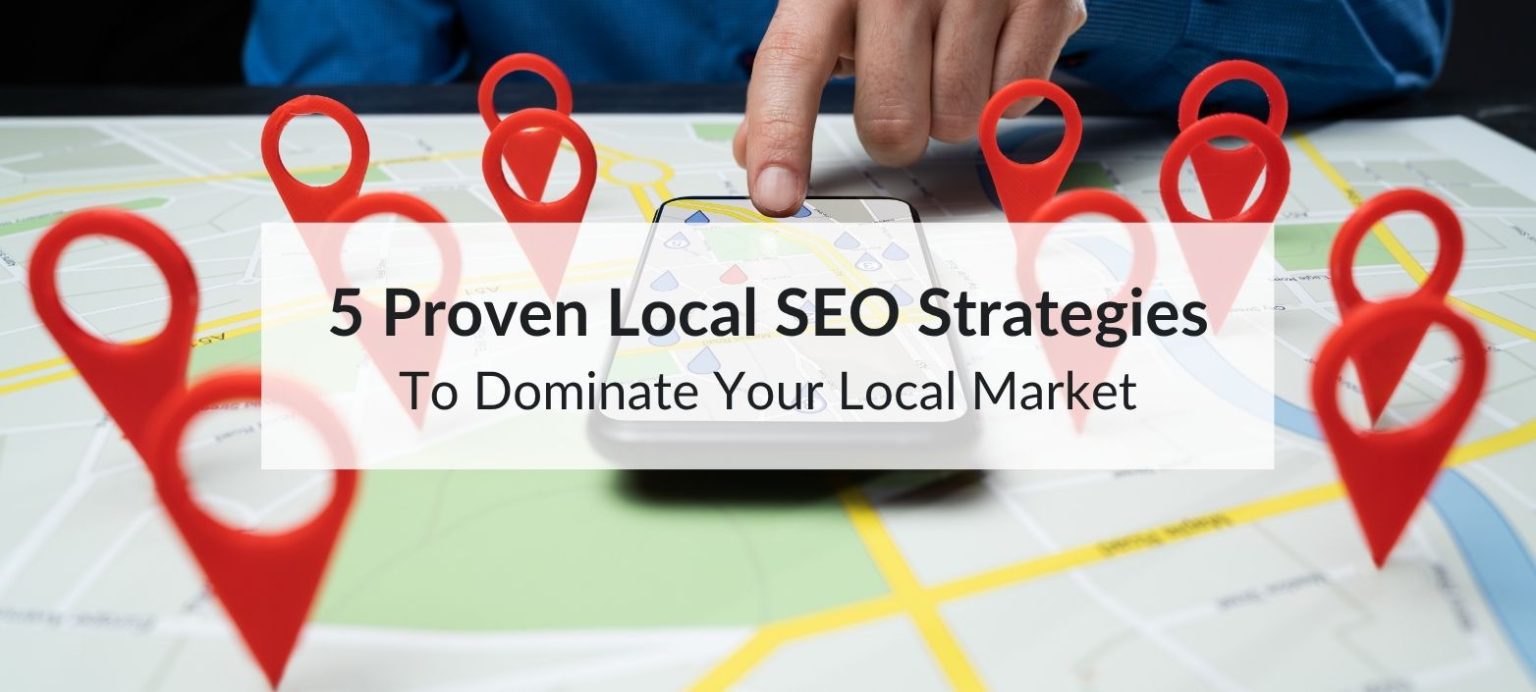Local SEO is the key to helping your business stand out in your area, attract nearby customers, and get ahead of competitors. If you have a shop or offer services, using local SEO makes sure people find you when they search online. In this article, we will explore 5 proven strategies to help you dominate your local market and boost your online presence.
What is Local SEO?
Local SEO is the process of optimising your website and online presence to attract more business from local searches. These are searches with location-specific keywords, like “coffee shop near me” or “best plumber in London.” Google uses local SEO signals, including your Google Business Profile, customer reviews, and location-based keywords, to decide which businesses to display in search results. This makes local SEO essential for any business that serves a specific geographic area.

Strategy 1: Optimise Your Google Business Profile
Why Your Google Business Profile Matters
Your Google Business Profile (GBP) is one of the first things customers see when searching for your services. An optimised GBP increases your chances of appearing in Google’s Local Pack and Google Maps, leading to more traffic, phone calls, and in-store visits.
Steps to Optimise Your Profile
- Fill out every section with accurate business information, including your name, address, phone number, and opening hours.
- Add high-quality photos of your location, products, and team to attract attention.
- Select the right business category to ensure Google understands what you offer.
- Keep your business details updated to avoid confusing customers.
Pro Tips for Maximum Results
- Post updates about offers or events weekly to stay active.
- Use features like Q&A and messaging to engage with customers.
- Track performance insights to see which actions bring the most traffic.
Strategy 2: Use Location-Based Keywords
How Location Keywords Improve Rankings
Including location-based keywords in your website and content tells Google exactly where your business operates. This improves your chances of showing up in local search results for terms like “bakery in Manchester” or “London wedding photographer.”
Tools to Find the Right Keywords
- Google Keyword Planner: Great for finding high-volume search terms.
- SEMrush or Ahrefs: Perfect for competitor research.
- Google Search Suggestions: Type in your services to see popular local phrases.
Best Practices for Keyword Placement
- Add location keywords in page titles, meta descriptions, and H1 tags.
- Use them naturally in blog posts, service pages, and FAQs.
- Include your location in image alt tags for additional SEO value.
Strategy 3: Build Local Citations and NAP Consistency
What Are Local Citations?
Citations are online mentions of your business name, address, and phone number (NAP) on directories, social media platforms, and websites. They help search engines verify your business’s legitimacy.
How to Audit Your NAP Details
- Check your details on Google, Bing, Yelp, and other directories.
- Make sure all information matches exactly. Even small discrepancies can hurt rankings.
Platforms to List Your Business
- Yelp
- Thomson Local
- Yell.com
- Facebook Business Page
- Industry-specific directories
Strategy 4: Encourage and Manage Customer Reviews
Why Reviews Impact Local SEO
Positive reviews not only build trust but also signal to Google that your business is credible and relevant. Businesses with strong ratings often appear higher in local search results.
How to Get More Reviews
- Ask satisfied customers politely in person or via email.
- Use automated review request software.
- Offer incentives like discounts or giveaways for reviews (check platform rules).
Responding to Positive and Negative Feedback
- Thank customers for positive feedback.
- Respond to negative reviews calmly and professionally.
- Show that you value feedback by addressing issues quickly.
Strategy 5: Create Locally-Focused Content
Benefits of Local Content
Content designed around your location establishes your authority as a local expert. It also helps potential customers see you as a go-to business in your area.
Types of Local Content to Publish
- Blog posts about local events and news.
- Guides and tips related to your services and area.
- Case studies featuring local clients.
How to Promote Your Local Content
- Share content in local Facebook groups and forums.
- Collaborate with local bloggers and influencers.
- Feature content in your email marketing campaigns.
Conclusion
Local SEO helps your business grow and reach more customers in your area. To optimise your Google Business Profile, use location-based keywords, build citations, manage reviews, and create content for your local audience to boost visibility and outperform competitors. To streamline your efforts, try getting YOAST listings to simplify optimisation, improve consistency, and save time managing your local presence. Start implementing these strategies now to dominate your local market and attract more traffic.

